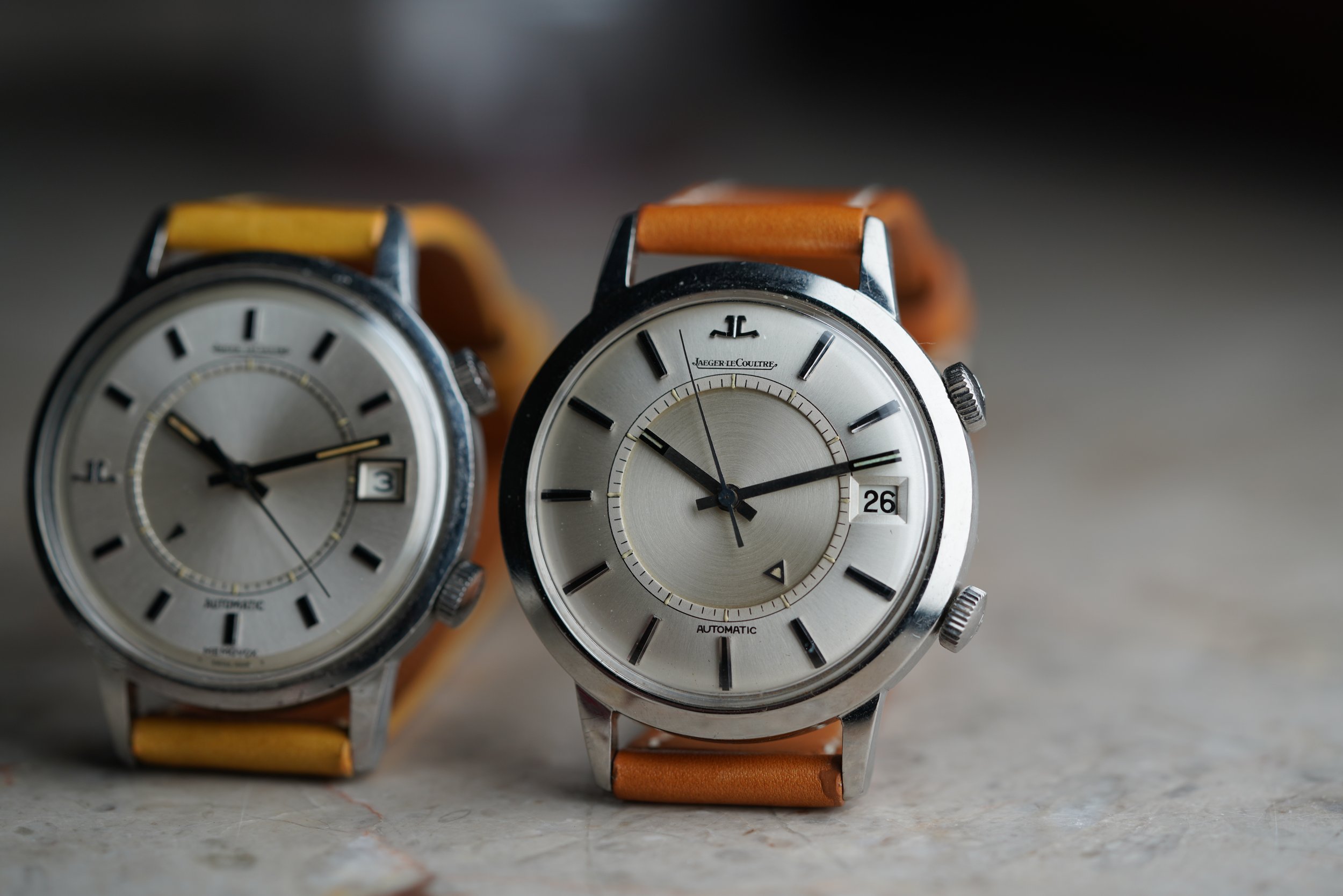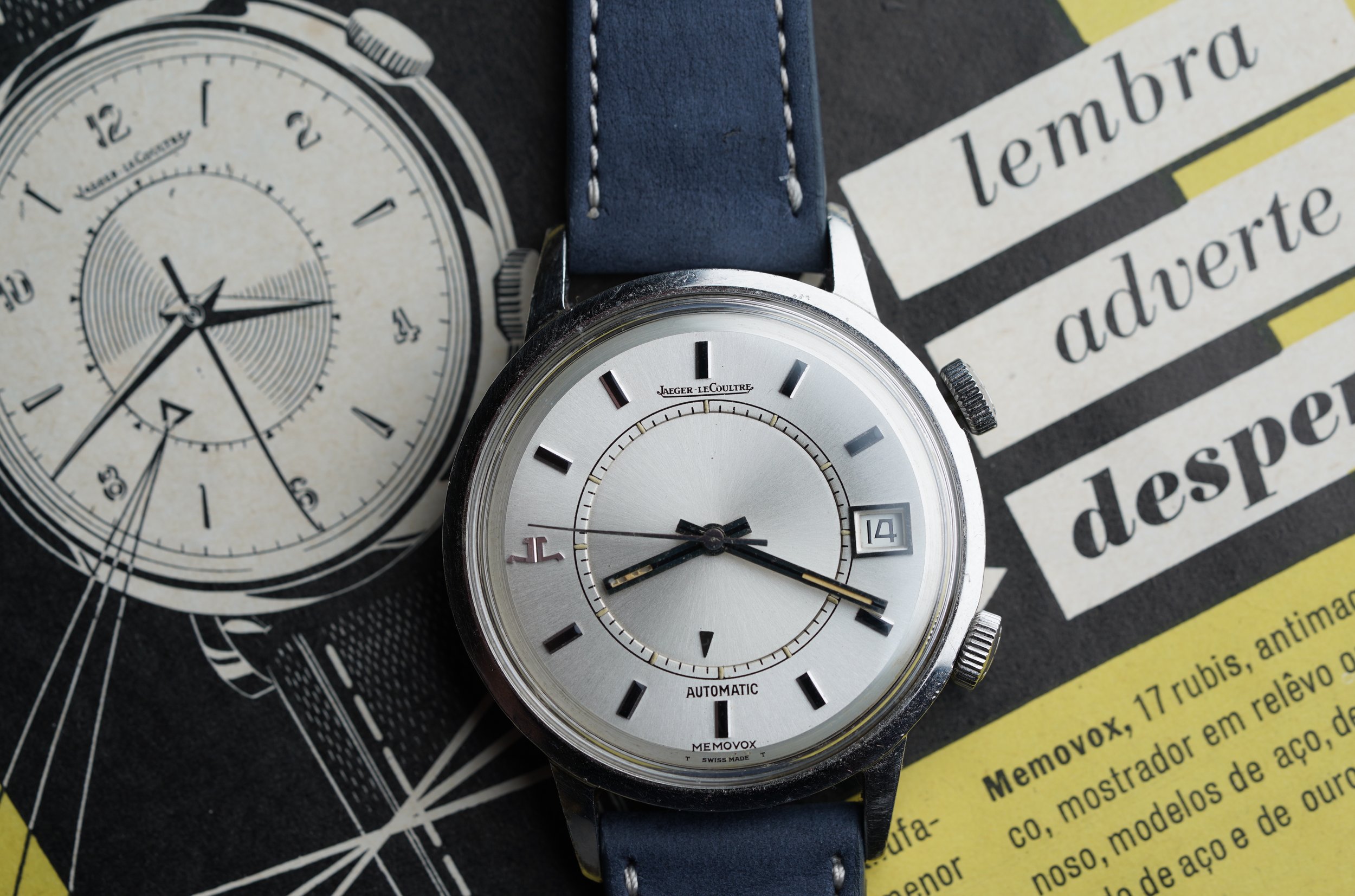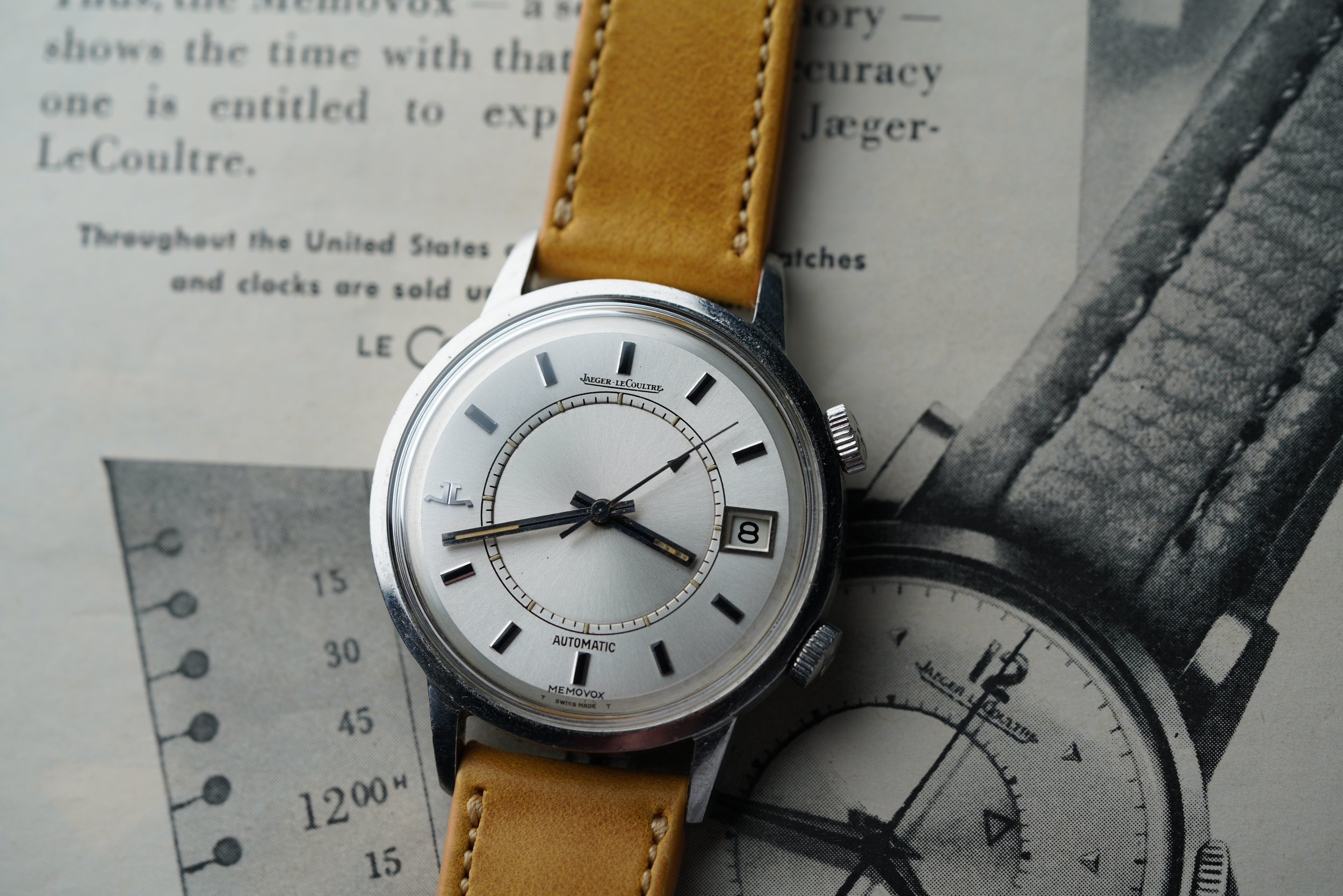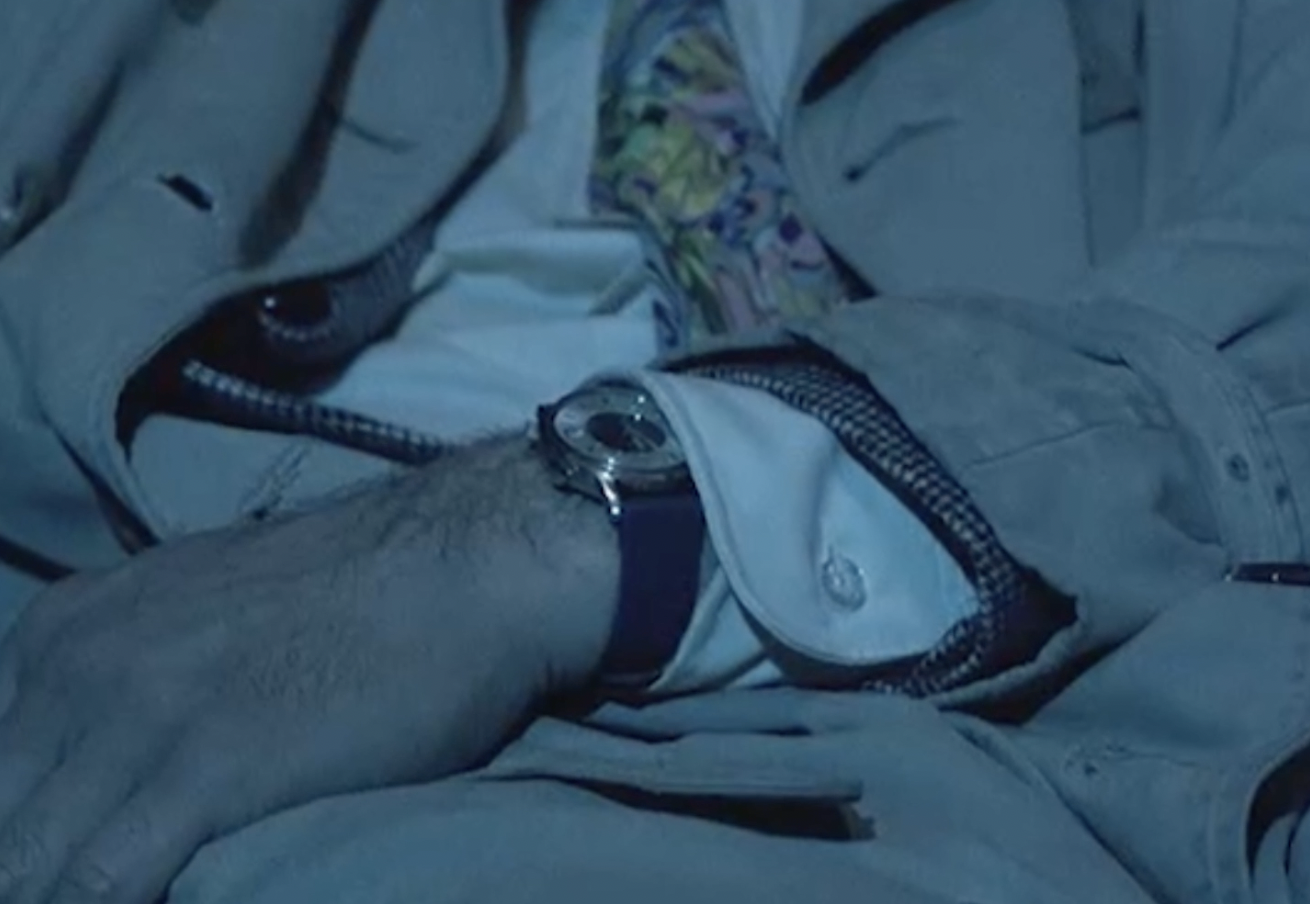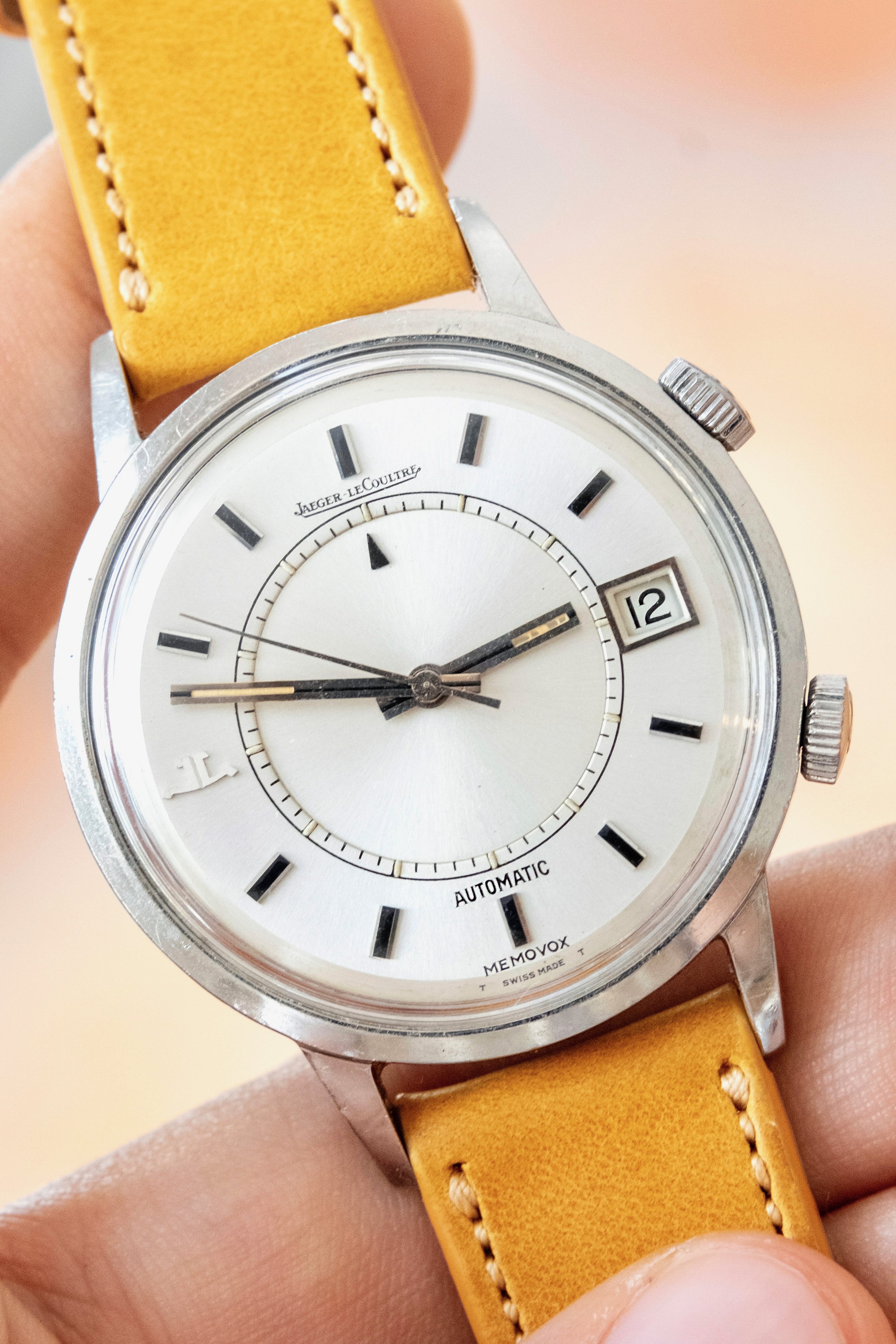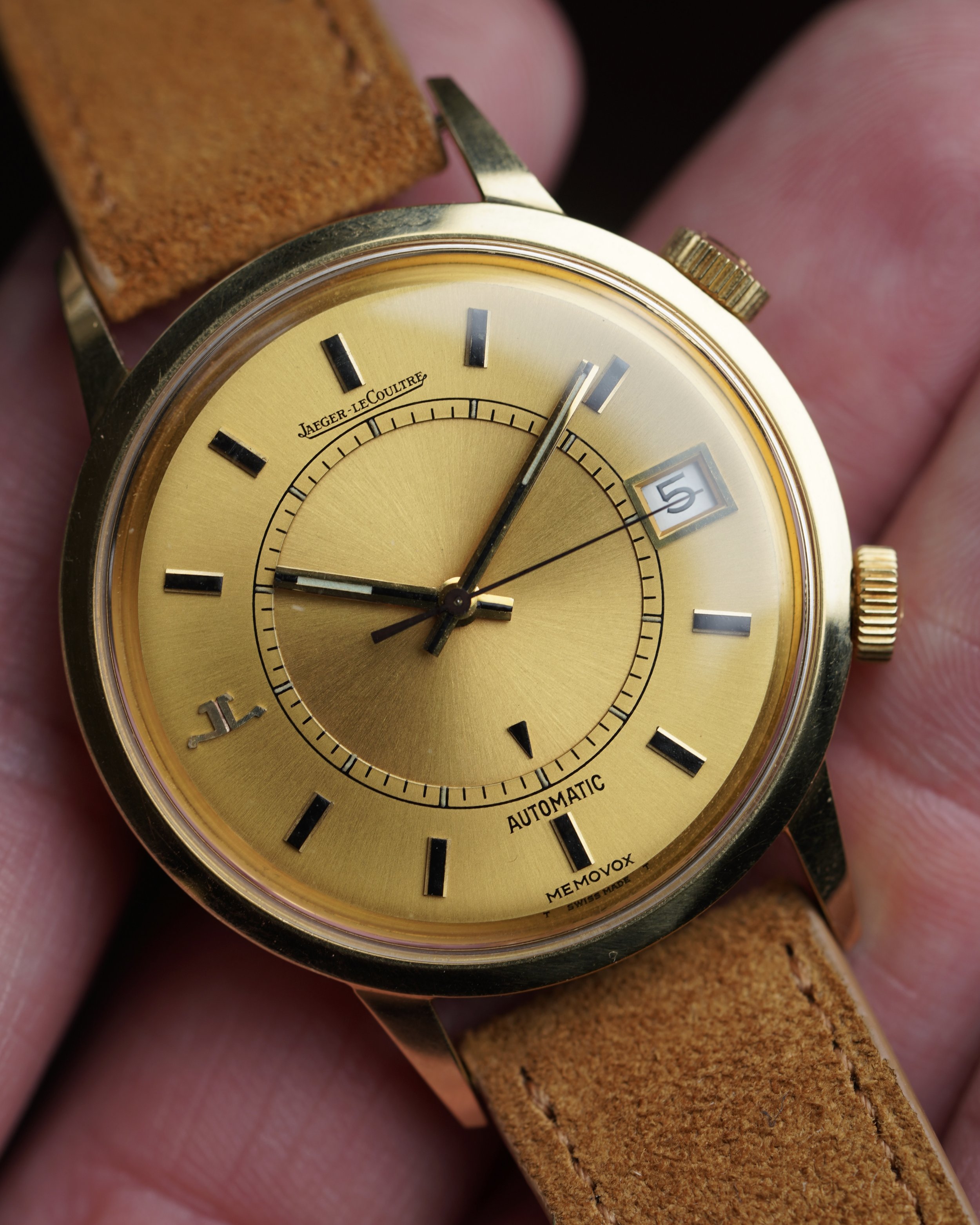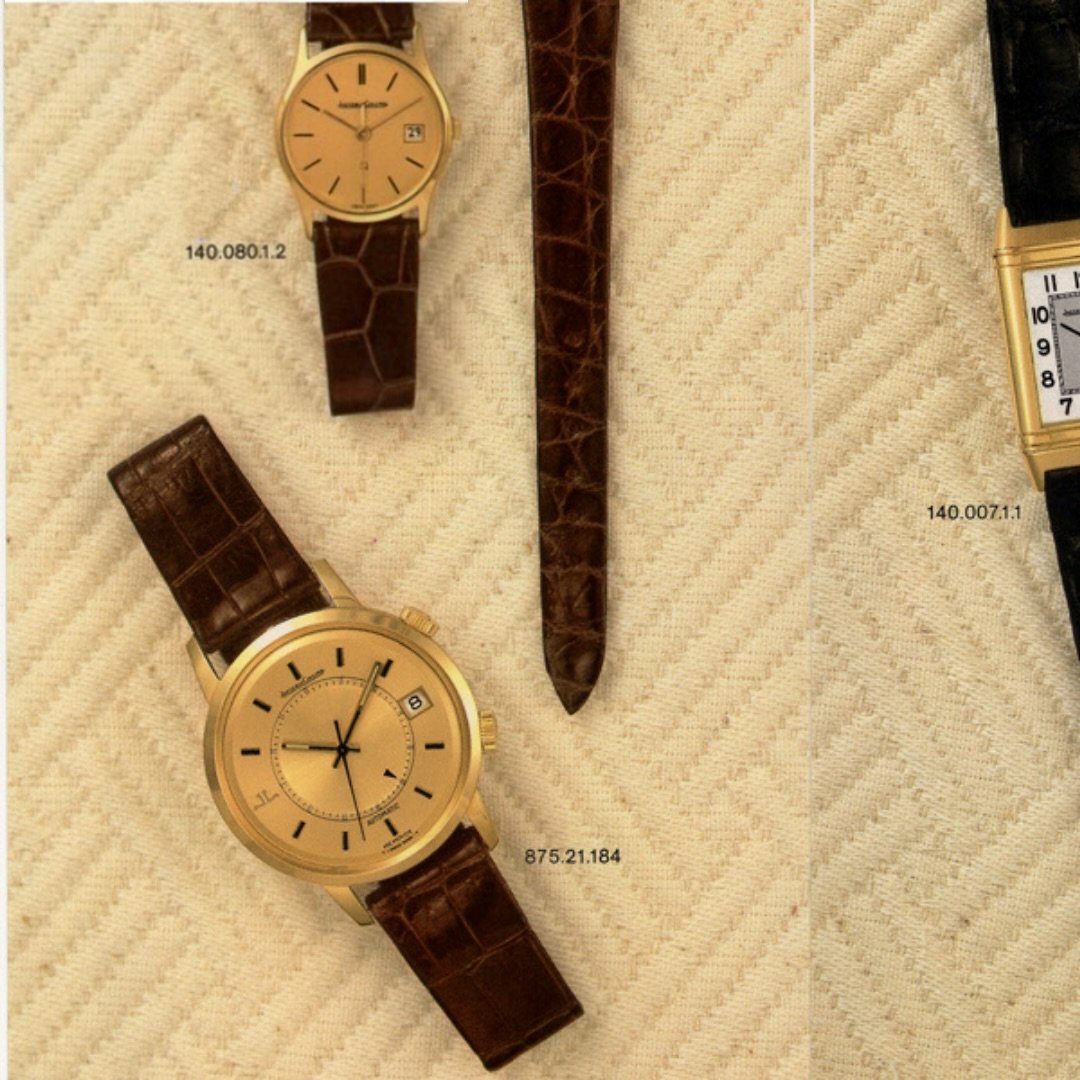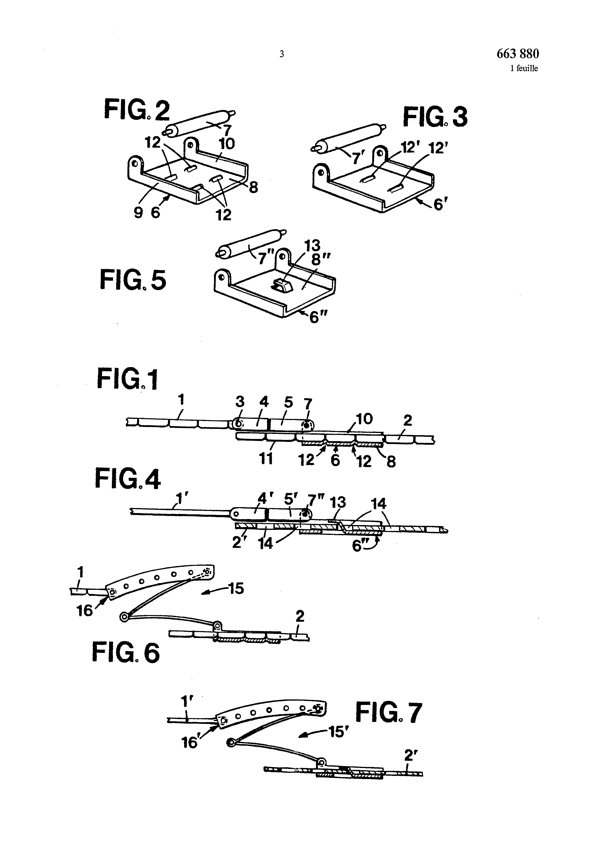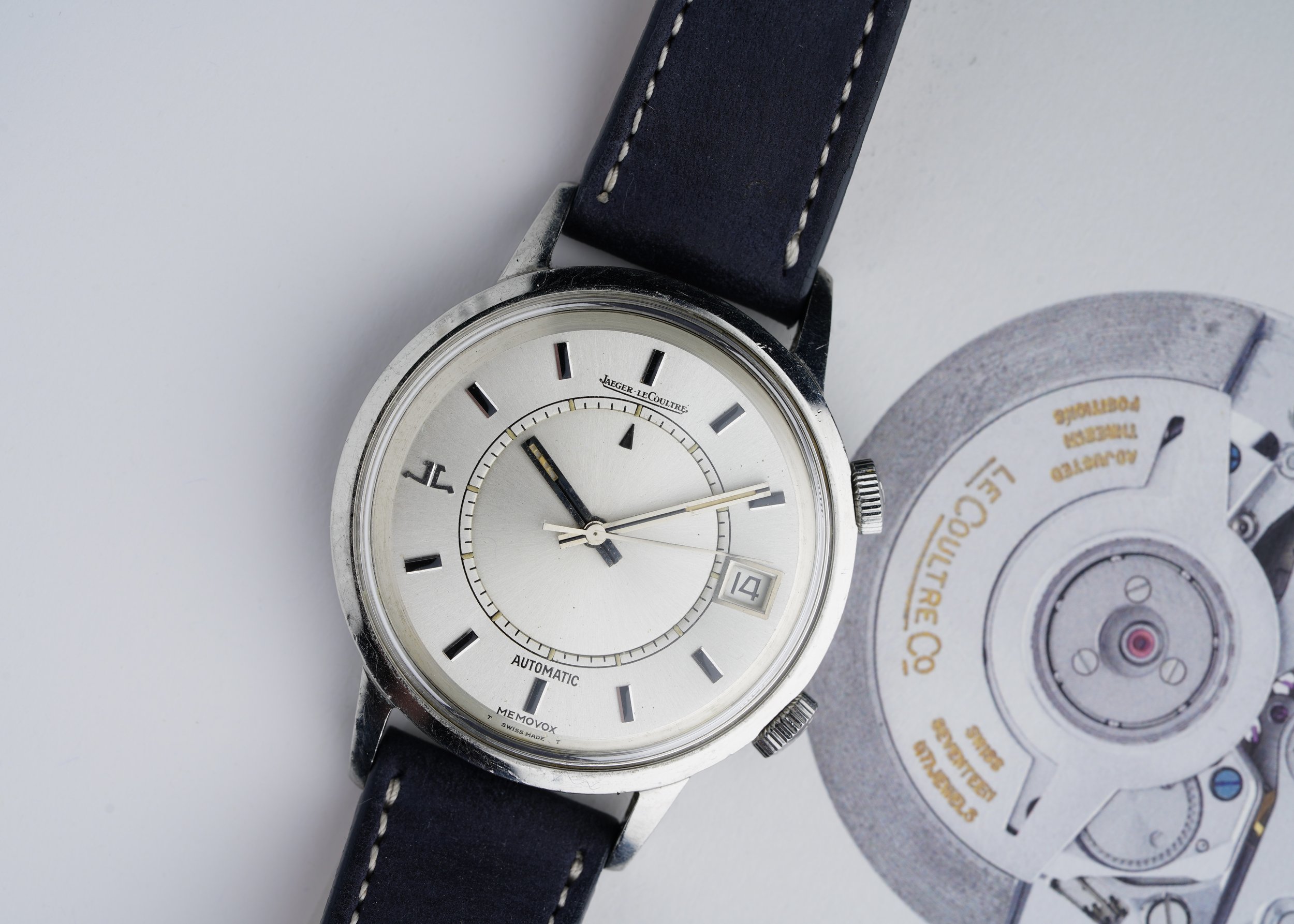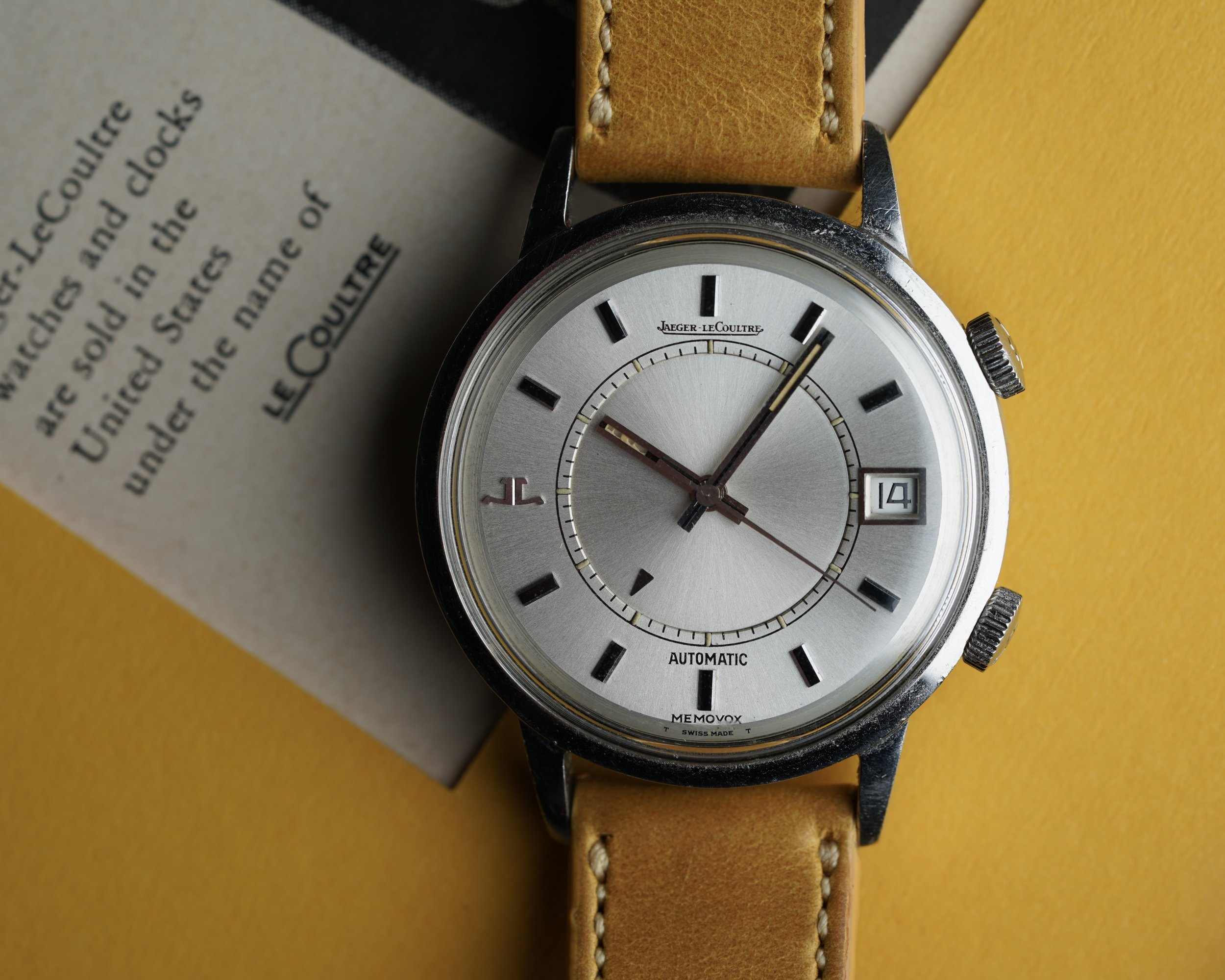Jaeger-LeCoultre Memovox Reference E 875
A Collector’s Guide
By Charlie Dunne
The Memovox is one of the many watches that demands recognition in the vintage watch collecting scene, and not strictly based on its association with the alarm complication. From a design perspective, many gravitate toward the dual-crowned watch only to then learn about the timepiece’s vocal tendencies. Of course, others became aware of the watch after its appearance on television shows like ‘Mad Men’. Attracting the attention of both collectors and noteworthy performers, the Memovox has been worn by the likes of Miles Davis, Charlie Chaplin and even Alec Baldwin.
Introduced at the Swiss Watch Fair at Basel in 1950, Jaeger-LeCoultre’s alarm wristwatch has enjoyed decades of continual production and a diverse catalog that can be looked back upon with fondness. As for the lines’ impact upon the manufacturer, the Memovox is an integral part of JLC’s legacy alongside such timepieces as the Reverso and Atmos clock. One particular vintage model that maintains contemporary appeal is the reference E 875. Perhaps right behind the reference E 855, the E 875 is a main contender for collectors due to the relatively large dimensions for the era, reliable movement, and distinct DNA. Slight differences between the cases of the 855 and 875 are evident, and will be explored in a future article on the reference 855.
1950 Basel Fair ad of Jaeger-LeCoultre Memovox reference 3150 with hooded lugs powered by the calibre 489. Image credit: Ad Patina
An early Memovox advertisement featuring an American-market wristwatch which resembles the reference 3150. The advertisement cites “Presented for the first time at the 1950 Swiss Watch Fair, [Basel], the new Jaeger-LeCoultre Memovox immediately won the favor of connoisseurs and of the public at large”. Image credit: Ad Patina
The unique Jaeger-LeCoultre products
The watchmakers of the Joux Valley have always maintained a special position in the Swiss watch industry. They have a reputation for being true artists in their field. For many years thinnest clocks and many complicated clocks in the Vallé de Joux.
The products of this factory, which are sold under the name Jaeger-LeCoultre, have been presented and recognized at many exhibitions as prototypes of the highest Swiss watchmaking art. For example, the smallest clock in the world was also in the hall of honor at our national exhibition in 1939. This watch, which is still mass-produced today, is a typical example of the technical prowess of the Jaeger-LeCoultre factory. It is 4.85mm wide and 14 mm long and contains no less than 74 individual parts under this small volume. On the other hand, the fact that the "ATMOS" clock is manufactured in the same factory, the clock that "lives on air," shows that the Jaeger-LeCoultre really did make a difference elite watchmakers, who of course have all the tools of technology at their disposal today. The ATMOS is affected by temperature fluctuations in the air and requires no maintenance, neither mounting nor oiling. Jaeger-LeCoultre has recently created an automatic wristwatch which is not only automatic, shockproof, antimagnetic and watertight, but also has a power reserve counter. This counter makes the automatic watch really complete, because it allows the wearer to give an account of how strongly their watch is wound at any time.
The latest creation by Jaeger-LeCoultre is the Memovox. This is an elegant bracelet fitted with a miniature chime. It rings at any time, discreetly when the watch is worn on the arm during the day, loudly when it fulfills the function of an alarm clock in the morning on the bedside table. The uses are unlimited. The Memovox reminds the busy of all professions of meetings. Rendezvous, travelers on train and plane departures, it shows the scientist the duration many observations, yes, it almost fulfills the role of a second memory. With the Memovox, Jaeger-LeCoultre has found the definitive solution to the alarm clock wristwatch. In fact, this watch hardly differs from any other, ordinary wristwatch. It is just as elegant, just as thin and has a very easy-to-read dial. This is thanks to the successful arrangement of the alarm clock hands, which consists in replacing the usual hand with a disc with an index. Handling is also very simple. The Jaeger-LeCoultre Memovox has two crowns, one of which is used to wind and set the hands of the alarm movement, so that any confusion is impossible. After their previous timepieces, the latest product of the watch factory Jaeger-LeCoultre proves once again the superiority of the Swiss watch industry.
Jaeger-LeCoultre’s manufacturing building in Le Sentier, Switzerland during the 20th century. Image credit: Europa Star (EUROPE | 1964 | ISSUE #30 | 6/6 | PAGE 62)
Advertisement showcasing Jaeger-LeCoultre’s manufacturing building in Le Sentier, Switzerland. Circa 1950s
An excerpt showing the Land of LeCoultre (aka Le Sentier) within an American market catalog circa 1970.
Reference 875 vs. Reference 875.42
While it may cause a bit of confusion at first, it should be stated up front that the reference 875 and reference 875.42 are the same model. Essentially, the Jaeger-LeCoultre Memovox reference E 875 family consists of metal codes which were incorporated sometime in the 1970s.
In the instance of Patek Philippe, case metals are denoted as followed: A for “Acier”, P for “Platin”, J for “Jaune”, etc. Instead, the Le Sentier manufacture denotes the case metal in numerical fashion. Ref 875.42 refers to stainless steel, while reference E 875.21 refers to models in yellow gold. One minor detail that appears frequently across the models bearing 875.42 is that they are often absent of the pronounced “JL” and “Speed Beat” branding on the case back. Comparing the 1.43M serial example seen above with a sample group of both decorated and non-decorated case backs, it seems that that JLC transitioned to metal codes for their timepieces in the early 1970s. Non-branded case backs with interior 875 stamps exist in the 1.31 million serial numbers and at some point around 1.34M, the “Speed Beat” case backs appear. Later, non-decorated case backs re-appear and feature the stamp 875.42 (or .21 if gold cases).
Note: Jaeger-LeCoultre have acknowledged the production of the ref 875 in white gold.
Jaeger-LeCoultre case metal codes:
.12 (Platinum)
.21 (18K YG)
.22 (18K WG)
.32 (Silver)
.42 (Stainless Steel)
.51 (Plated metal)
.61 (14K YG)
.62 (14K WG)
.71 (gilt)
.72 (Rhodium plated)
Source: WatchProSite/Blomman
Jaeger-LeCoultre from left to right: reference 2975, reference E 875, and reference E 851.
Comparative view of Jaeger-LeCoultre Memovox reference E 875 Speed Beat and the reference E 855.
The Case
Amongst the entire line of Memovox models, I find the reference E 875 and reference E 851 to be some of the most favorable cases as the vintage proportions wear very beautifully while being worn. The E 851 is more elongated by the lugs, while the E 875 is very much an “all-dial” watch. The case diameter measures 37mm, or 45.5mm length lug-to-lug. While I typically would find a 45.5mm length to be on the larger side, the lug width is a standard 18mm which I find balances the entire timepiece on the wrist. Comparing the ref. 875 with the other Memovox offerings throughout the 1970s, this model maintained a more traditional design as opposed to the pebble, and “SnowDrop” cases. It features a two-body case with a screw-down case back. This qualifies the watch as “water resistant” and as a result the reference is designated as E 875 for etanche. Despite this, the crowns do not lock in place, and any instances of the model being submerged are not encouraged. In reality, these references were made to be “splash proof” at best with a grading of 2 ATM.
Although it is unclear if Jaeger-LeCoultre had been producing their own cases, or had an exclusive case maker that would bear the manufacturer’s LC imprint and hallmark #3. The initials can be seen in the interior case back of the yellow gold reference 875.21, so I would be eager to learn if the Heritage Department can clarify whether this detail indicates an in-house case production. Although, it is worth stating that in many instances, Jaeger-LeCoultre would seek out case specialists (a common practice in the industry to this day). Just a few examples include Star Watch Case Company for the American market reference 2404, Huguenin Frères for the Deep Sea Alarm, and Ervin Piquerez (EPSA) for models like the Polaris II reference E 870 and Polaris reference E 859.
At this point, Jaeger-LeCoultre has made it standard for signed crowns, buckles, etc. At both 2 and 4 o’clock notched “JL” signed crowns are present with dimensions of 5.5mm in diameter and 2.5mm in height. From the aerial perspective, the bezel and lug surface will feature a mirror-polished finish. Very important to note is that the case and lug profile should have a horizontal brushed surface. Far too often these models have been polished resulting in a “shiny” exterior and loss of metal. Because the lugs are downturn, it can be an easy oversight and inspecting the sides of the case is highly encouraged.
For those who are new to collecting vintage watches, sometimes signs of wear (scratches or small dents) can be good indications when looking for a watch that is unpolished. When it comes to precious metals, the finish on gold can often be deteriorate simply from normal wear. Although not practical in this steel example, one can look for hallmarks on the exterior of the case for insights into whether it has been polished.
Two JLC Memovox reference 875 models. Right model paired on NSA courtesy of Augustin Simat.
Two JLC Memovox reference 875 models. Left model paired on NSA courtesy of Eric Wind.
The JLC Ref E 875 in the The Beyer Museum collection.
See articles Inside The Beyer Clock and Watch Museum: Part 1 and part 2.
Dial
The dials variants of the steel reference 875 include three versions. The first version is the white with a soleil (sunburst) finish. The second is a blue dial, once again with a soleil finish. The third variant, termed by French collectors as the “Claude Brasseur”, is a blue interior and white exterior dial variant which derived its nickname for its feature in the film ‘il faut vivre dangereusement’. While it is merely a personal theory, I believe the “Claude Brasseur” dials were the sole blue/white combination, and that blue exteriors with white interior-rotating discs are inaccurate. This dial can also be seen within sales brochures of the era. For gold examples, the dial will correspond in a soleil-gold tone finish or white dials white yellow-gold hour markers.
Note: While the white-on-white dials make up the majority within the sample size, they do not necessarily reflect the majority share of produced Ref. 875.
Jaeger-LeCoultre Memovox “Claude Brasseur” reference 875.42.204. Image credit: @jojolamontre
Throughout most of the film ‘il faut vivre dangereusement’ Claude Brasseur’s character can be seen undoubtedly wearing a reference 875.42.204 (paired with the original-signed buckle). Scenes include the character being unexpectactly drenched under a shower head in full attire, being awoken by the alarm multiple times, and even forced at gunpoint to relinquish the watch from his wrist. Several [non-explicit] scenes of the actor and his timepiece can be seen below.
“T SWISS MADE T” is painted at 6 o’clock, indicating the dial features tritium. Luminous baton hands, and an interior minute track with 12 lume plots are present within all versions. The fixed dial descends into a slightly recessed alarm disc. This interior rotating disc features a isosceles triangle. Albeit a non-luminous triangle, it is similar to the one seen on the “Travalarm” reference 3157.
The present example features compact-applied hour markers with what appears to be a black surface material (possibly a black paint/lacquer). Past models in the reference E 855 will also feature a black surface on the hour markers. There has been discussion that JLC’s hour markers would incorporate an embedded strip of onyx. While the manufacturer was using stone dials like lapis lazuli on models such as the Memovox or Atmos, I’m not certain this is the case for these hour markers. The black material sits slightly above the polished surfaces. This combination creates a very bold appearance when light is reflected off each hour. These markers seem to be exclusive to white-dial variants (in addition to the gold reference 875.21 models) and will be complemented with a set of hands featuring the black inlay with tritium.
The aperture positioned at 3 o’clock is placed slightly on the painted-minute track and the applied” JL” logo recedes from its former home at 12 o’clock on earlier references such as the 855 or American-market Memodates to now be positioned at 9 o’clock. As I’m told from @fldx_clavi the logo’s reposition can first be seen within the reference E 871. This branding transition within the Memovox calendar line is perhaps is the best design upgrade for those who prefer symmetry and balance within their dials. Furthermore, the applied logo’s surface is quite appealing in different lights, as it can present more muted in a dim setting, or as seen in the photo by James Fisk (@jmsfisk) it can become camouflaged amongst the silver dial.
Image credit: Photographer and vintage watch hunter James Fisk (Instagram: @jmsfisk)
Comparing the sample group of thirty-one E 875 and E 875.21 and E 875.42 models, it appears there may be an insight found within the dials. The black hour markers are more commonly found in examples that bear the non-branded case backs, whereas on both the blue and “Claude Brasseur” dials, grooved metal hour markers are found. These dials will correspond with non-black hands and in the instance of a “Claude Brasseur”dial, there is a blue accent on the outermost part if the dial at the section it descends.
While this is merely an observation, it raised the question whether branded “Speed Beat” case backs are exclusive to both blue and “Claude Brasseur” dials. Based on what can be seen within the thirty-one examples, there are two outliers. And while at this point it is likely an insufficient amount of decorated case backs in the sample group, I feel it is interesting context to include (and not advice and/or commentary on “incorrect” elements of the reference).
875.42.104 (White)
Image credit: Wind Vintage
875.42.164 (Blue)
Image credit: Antiquorum
875.42.204 (White/Blue “Claude Brasseur”)
Image credit: @jojolamontre
Jaeger-LeCoultre Memovox reference 875.21.184
Jaeger-LeCoultre Memovox reference 875.21.184
Extract From The Archives
Jaeger-LeCoultre Extract from the Archives
After corresponding with Giuseppe Sciascia of the Jaeger-LeCoultre Heritage Department, the records indicate the present models was produced in circa 1974.
Marketing Material
Within Leonhard Beitl’s ‘Alarm am Arm. Der mechanische Armbandwecker von A-Z’ several models of the reference E 875 are illustrated. Variations of the steel case with white dial, gold case and gold dial, as well as the steel case and blue dial are featured within the featured Memovox catalog for the German market.
Novavit S.A. bracelet for Jaeger-LeCoultre Memovox.
Der Bund, Volume 123, Number 1, 3 January 1972
Jaeger-LeCoultre catalog featuring “Claude Brasseur” Memovox Speed Beat reference 875. Image credit: Blomman Watch Report (WatchProSite Forums).
Der Bund, Volume 123, Number 226, 26 September 1972
“The rooster crows to mark the change from night to day. The Memovox from Jaeger-LeCoultre crows to change from one Session to session, from one parking space to another, from one thought to another. The rooster has a small brain and a powerful voice, the Memovox has a precise brain and a pleasant voice. The businessman appreciates that. The more concentrated he works, the more useful the Stim becomes me the faucet's discreet snarl reminding me that it's time to stop a conversation or action.”
Der Bund, Volume 124, Number 209, 7 September 1973
Throughout the early 1970s, the steel model retailed at 525 - 550 Swiss Francs. Within a 1974 German sales brochure, the steel model is priced at 580 Deutsche Mark, while the gold examples were 1,475 DM. Türler, the popular Swiss retailer known for selling renowned manufacturers, placed several ads within newspapers such as Der Bund and Neue Zürcher Zeitung throughout the 1970s which included the reference 875. These are specifically white dial variants sold on leather straps.
Image credit: Neue Zürcher Zeitung, Number 67, 21 March 1978
Speaking with Jaeger-LeCoultre collector @fldx_clavi, he would share an a promotional folder with several photocards of models featured. While no date can be found printed on the pamphlet, Clavi highlights the Reverso’s 2 godrons which he attributes to circa 1980-1982. Interestingly, the reference is described as “875.42.164”. This final code reflects the dial color as being blue.
Note: Ref 875.42 Dial Codes
.164 (Blue)
.104 (White)
.204 (White/Blue “Claude Brasseur”)
Buckles/Bracelets
The models sold on strap would accompany a signed buckle similar to the present example.
A similar blue leather strap worn on the reference 9009 seen within a Jaeger-LeCoultre catalog for the Japanese market circa 1972
Memovox Ref. 857 on original black leather strap courtesy of @mitchkatz7
It is likely that the JLC Memovox reference 875 was more often sold on leather straps with signed buckles. Blue leathers should have been sold with the with the “Claude Brasseur” as seen within the film, while white dial options were sold with black leather straps. Certain watches were also sold on branded JLC bracelets produced by NSA (Novavit S.A.). While earlier Memovox models were paired with creations from the renowned bracelet manufacturer Gay Frères, Novavit would become a serious player in the bracelet scene winning Gold Medal at the Salon international des inventeurs in 1966. Interestingly enough, Gay Frères would be the French distribution agent for Novavit in the 1980s.
Image credit: Larry Seiden
The buckles appear to be produced by Wenger, case and buckle specialist who were often commissioned by leading manufacturers from Geneve and the Vallè. Jaeger-LeCoultre (along with brands like Zenith, Movado, and Favre-Leuba) would commission a variety of bracelets from Novavit S.A. during the 1960s and 70s. The JLC bracelet found on the 875 can be seen within the catalog photos above, as well as within several advertisements on Europa Star. The inventor Jean-Claude Lenherr worked with NSA to create several versions of the bracelet, many of which incorporated and extendable slide clasp which was applied for on August 12th, 1981.
Memovox paired with a period-correct leather strap courtesy of @10thwatch.
Jaeger-LeCoultre paired with bracelet by NSA courtesy of Eric Wind.
Jaeger-LeCoultre paired with bracelet by NSA courtesy of Augustin Simat.
Jaeger-LeCoultre bracelet by NSA courtesy of Augustin Simat.
Later Jaeger-LeCoultre NSA bracelets for jumbo models like the reference E 871. These bracelets feature the extendable slide clasp patent.
Novavit S.A. Patent CH 663880 A5 “Device For Connecting A Bracelet To A Clasp”. Image credit: Espacenet
An adjustment element (6) in the shape of a U is articulated on a part (5) of a fastener (4, 5). The median part (8) of this element (6) is flat. It is on this that an end (2) of the bracelet is placed, the other end of the bracelet being fixed to another part (4) of the fastener (4, 5). The flat median part (8) is parallel to the fastener (4, 5) and distant from the rear face of the fastener by a distance equal to the thickness of the bracelet. The end (2) of the bracelet engaged on the adjustment element (6) is thus wedged between this element (6) and the fastener (4, 5). Projections (12) are provided on the adjustment piece (6) in order to interact in an adjustable manner with corresponding depressions existing between the links of the bracelet (2). A sprung small bar (7) acts, on the one hand, as a connection and a pivot between a part (5) of the fastener (4, 5) and the adjustment piece (6) and, on the other hand, serves to clamp and immobilise the bracelet (2) between this part (5) and this element (6). This arrangement has the advantage of concealing the end part (11) of the bracelet from view, it being masked by the fastener when it is closed.
N.S.A. Bracelet advertisement. Image credit Europa Star (EUROPE | 1982 | Issue #131 | 1/6)
Novavit S.A. bracelet for Jaeger-LeCoultre Memovox with different end links. Image credit: Europa Star LATIN AMERICA | 1970 | ISSUE #115 | 1/6 | PAGE 172
Novavit S.A. advertisement. Image credit: Europa Star ASIA | 1968 | ISSUE #104 | 1/6 | PAGE 190
Calibre 916
Image credit: watchguy.co.uk
In circa 1956-1957, Jaeger-LeCoultre released the first automatic alarm wristwatch powered by the calibre 815 utilizing a bumper movement. Three years later, the calibre 825 was introduced, incorporating a calendar complication and becoming the first automatic alarm watch with a date function. The calibre 916 would mark a new achievement that remains underdiscussed as it was JLC’s first alarm calendar movement with fully rotating rotor. It features a 45-hour power reserve.
The calibre 916 is a self-winding (automatic) in-house movement by Jaeger-LeCoultre introduced in circa 1970. There are conflicting reports of how long the 916 remained in production. Both the initial-German publication and subsequent English print of Michael Philip Horlbeck’s ‘The Alarm Wristwatch: The History of an Undervalued Feature’ cite the production until 1983 (pg 114). However, ‘Jaeger-LeCoultre: A Guide For Collectors’ features a reference breakdown with the E 875 being introduced two years after from 1971 until 1981 (pg 146). An exhaustive study of Beitl’s ‘Alarm Am Arm: Der Mechanische Armbandwecker von A-Z’ shows production dates in what is cited as “[an] original printout from JLC from 1994” as “1970-1978” (pg 273). My inference would be to cite the end of production in the tail end of the 1970s, as it was extremely common for manufacturers to produce movements only for them to be cased and sold years after the fact, particularly during the Quartz Crisis.
Image credit: watchguy.co.uk
“[The calibre 911 is] an entirely new automatic movement. The rotor oscillates on a ball bearing and the balance-wheel has a 28,800-per-hour vibration rate [and incorporates a] calendar.”
- Europa Star EUROPE | 1970 | ISSUE #62 | 2/6 | PAGE 99
Image credit: watchguy.co.uk
This calibre ushered in the bi-directional, fully-oscillating weight movements from the long produced bumper automatics which held rank within the manufacturer’s catalog shortly over the preceding decade. The movement is where the “Speed Beat” nickname derives from as it operates at a frequency of 28,800 vph (or 4Hz). This high-beat movement incorporates a calendar function and was marketed for its improved precision. According to Watch Wiki, the 916 was “the first Jaeger-LeCoultre alarm calibre to use a high-speed [of] 28,800 [VPH] .” This was an interesting era in which many manufacturers were racing towards the high-beat movements. Eric Wind of Wind Vintage, who found the Memovox E 875 in this article, described the era as such: “The 1960s were a time of rapid improvement and development of automatic movements, notably the first automatic chronograph movements, but also a time where manufacturers were seeking to produce extremely high-beat and more accurate movements, most notably the Zenith El Primero calibre 3019 PHC chronograph movement introduced in 1969.” During the same year of this calibre 916’s introduction, the Zenith El Primero would in fact be released in three separate references (each with the calibre 3019 PHC boasting a 5Hz 36,000 VPH). The 5Hz movements would require more frequent servicing due to the higher beat rate as well as special oils, which was the reason manufacturers such as Rolex would transition to a 4Hz Zenith movement for use in the first automatic Daytonas including the steel reference 16520. Wind stated, “According to watchmakers who work on them, these higher-beat calibres required special, thicker lubricants, otherwise the speed of the balance wheel could cause the oils to loosen and cover parts of the movement that should remain dry.”
The calibre 916 incorporate KIF shock protection (calibre K916), and later movements will be absent of the K. Of the variations, it is KIF 3. In tradition with the earlier Memovoxes, the alarm is powered by the crown positioned at 2 o’clock, while the movement can be wound by the 4 o’clock crown (or by kinetic energy). One detraction for this movement is changing the date. While one can set the date forward by setting the time back and forth, the possibility of damaging the movement is a risk. Instead, it is advised to move the calendar forward to set the correct date.
Note: The calibre 916 can be found in references E 870, E 871, E 872, E 873, E 874, E 876, and E 877.
Image credit: watchguy.uk
“In 1970, Memovox Calibre 916 was the first of a new generation of higher-frequency automatic movements developed by Jaeger-LeCoultre. Increasing the balance-wheel frequency to 28,800 vph (vibrations per hour) made the calibre less vulnerable to shocks and fast, jerky movements, and thus more accurate. A new automatic winding system introduced an oscillating weight that turned 360 degrees around its axis to wind the mainspring; more efficient than the previous ‘bumper’ winding system, it enabled the mainspring to store more energy – meaning a longer power reserve.”
- HeritageGallery.Jaeger-LeCoultre.com
Alarm
The calibre 916 incorporates an alarm which lasts for roughly 20 seconds in length. The tone is much more higher pitched than in previous movements, which is likely a result of the case, calibre and repositioned pin at the center as opposed to the off-center pins which preceded it. In my personal view, this reference is the best sounding alarm within vintage JLC models. The alarm has a much brighter tone compared to the reference E 855 which oftentimes sounds a bit dull.
Overall, the E 875 is one of my personal favorite Memovox references. The combination of a great dial design, oversized case, interesting calibre and sharper alarm really elevate this model amongst the large catalog of alarm watches. The late 60s and 70s would introduce more bold designs from JLC, including both case and dial. The 875 enters the space with a forward thinking movement, and a design that remains in line with the manufacturer’s traditional aesthetic. Alongside alarm watches like the early Vulcain Crickets, vintage the Memovox is an iconic watch with great collector appeal.
Bzzzz Bumblebee hand by seconde/seconde/
Acknowledgements: I would like to begin with expressing great appreciation to both @fldx_clavi and Eric Wind of Wind Vintage for lending considerable insights and contributions towards this article. I'm also grateful to Nick Federowicz of Ad Patina for documenting and providing primary source material within this article and several other projects. Special thanks to James Fisk (Instagram: @jmsfisk) for the use of his photograph of my timepiece within this article. Additional appreciation to Scott (@10thwatch), Augustin Simat and Mitch Katz for their support with the article. Special gratitude towards Giuseppe Sciascia of Jaeger-LeCoultre’s Heritage Department for providing assistance on production dates for my personal timepiece. Additional gratitude to Serge Maillard and the Europa Star team for the incredible primary source materials provided through their platform. Important acknowledgement towards the Jaeger-LeCoultre collector community for documenting a great deal of JLC’s history and resources on PuristsPro (WatchProSite) through amanico, collector @Hurmen, in addition to BlommanWatchReport.
Additional appreciation towards the following publications:
‘Alarm am Arm. Der mechanische Armbandwecker von A-Z’ by Leonhard Beitl.
‘The Alarm Wristwatch: The History of an Undervalued Feature’ by Michael Philip Horlbeck

To read about other Jaeger-LeCoultre timepieces, see below:
The Vintage Jaeger-LeCoultre Reference 2983: It’s about time for time-only JLC to get its praise
A Vintage Jaeger-LeCoultre Memovox Catalog Circa 1958
LeCoultre Chronograph Reference 224115
‘Vintage LeCoultre Memovox Reference 2404 (Circa 1960s)’
‘Vintage LeCoultre 8 Day Alarm Travel Clock Reference 53’
‘Vintage Jaeger-LeCoultre Memovox Reference 3157 aka the “Travalarm”’
‘Jaeger-LeCoultre Reference 11016 A Clous de Paris alarm clock from Christmas of 1972’
Jaeger-LeCoultre Reference 11012 Retailed by Hermès
Jaeger-LeCoultre Memovox Reference E 851
LeCoultre Memodate: A Vintage Gold-Filled Gift For A 13 Year Old Collector
Watches Within A 1938 Men's Fashion Catalog
Photo Gallery Vintage Jaeger-LeCoultre Reference 2957‘
Parechoc and the P450/4C’: What is Parechoc, and what is it doing in my JLC?


![Memovox Advertisement “Presented for the first time at the 1950 Swiss Watch Fair, [Basel], the new Jaeger-LeCoultre Memovox immediately won the favor of connoisseurs and of the public at large”. Image credit: Ad Patina](https://images.squarespace-cdn.com/content/v1/615cf0ec02ba0a4962cf2b7f/9573d729-9cfb-417a-b159-656d4b37a302/IMG_3187.jpeg)







